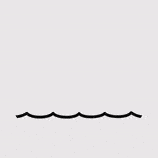Night surfing is a thrill that not many have experienced in their life. As surfing is already popular as a great way to exercise, to see what the world has to offer, and to really enjoy the ocean. Surfing during the day is of course the most popular, but night surfing is certainly gaining in popularity. Learning a bit about this type of surfing can help you determine if you want to take part or if day surfing is exciting enough for you.
What is Night Surfing?
Night surfing is just that, surfing at night after the sun has gone down or is going down. But it is different in so many ways from day surfing, not just because of visibility, but also in terms of the tides and experience. At night the waves seem larger, even if they are not, quicker, and a bit more intimidating as well. With night surfing the main concern is that your visibility is reduced, so you are likely to judge on your instincts.
Benefits of Night Surfing
The good thing is that, during the night there are less people on the waves. Less people means less issues in reading a wave even if you are a beginner. This is a plus for many as day surfing does present the challenge of having to deal with other surfers that are also trying to score the perfect wave.
Night surfing is calming and very relaxing. It gives the surfer a bit more freedom to surf whereas during the day they do have to compete with other surfers unless you are going for a Mentawai surf trip. Surfing at night is a fun thing, especially when it’s a full moon.
Dangers of Night Surfing
Night Surfing can also be dangerous. Learning about some of the drawbacks can help you determine if it is for you. The biggest danger of night surfing is of course low visibility. Lesser the light, more prone you are to get hurt or to get disoriented when a wave hit. This means that you should be well prepared when you are surfing at night.
Another drawback of night surfing is that sharks are more active at night (See this blog and jump straight to point 4 & 5). The water is going to be less occupied, so you are likely to be the only focus of a shark. If you do see a shark, take the same evasive precautions as you do during the day, unless you are Cristina Zenato.
Still another drawback of night surfing is that if you are swept away, the chances of someone being able to help you are less as opposed to during the day. Making sure you have someone with you is a great safety net to assure you are going to make it back safely after you are done surfing.
Why is Night Surfing So Popular?
Night surfing is popular for the thrill factor, for the seclusion and for the serenity that comes with a night time ocean. Oh, and don’t forget the amazing surf shots you can take if you follow the right night surf photography tips. It gives you a different kind of calmness and peace. You are able to get all the waves without sharing with anyone. For those that are surfing at night, a surf resort close to surf breaks, may be your best bet at getting some great night time waves.
Surfing at night is a great change of pace and fun if you are looking for something different or you are just done with the daytime surfing scene. Night surfing is also cooler in temperature, exposes you to less UV rays, and helps you to relax.
Taking the time to try night surfing is sure going to pay you off. It does not come without challenges, preparing well so that you are able to get in and out safely is a must. It also depends on where you are surfing. Making sure you find the right beach, the right waves, and the right location can make a big difference in your overall experience.




